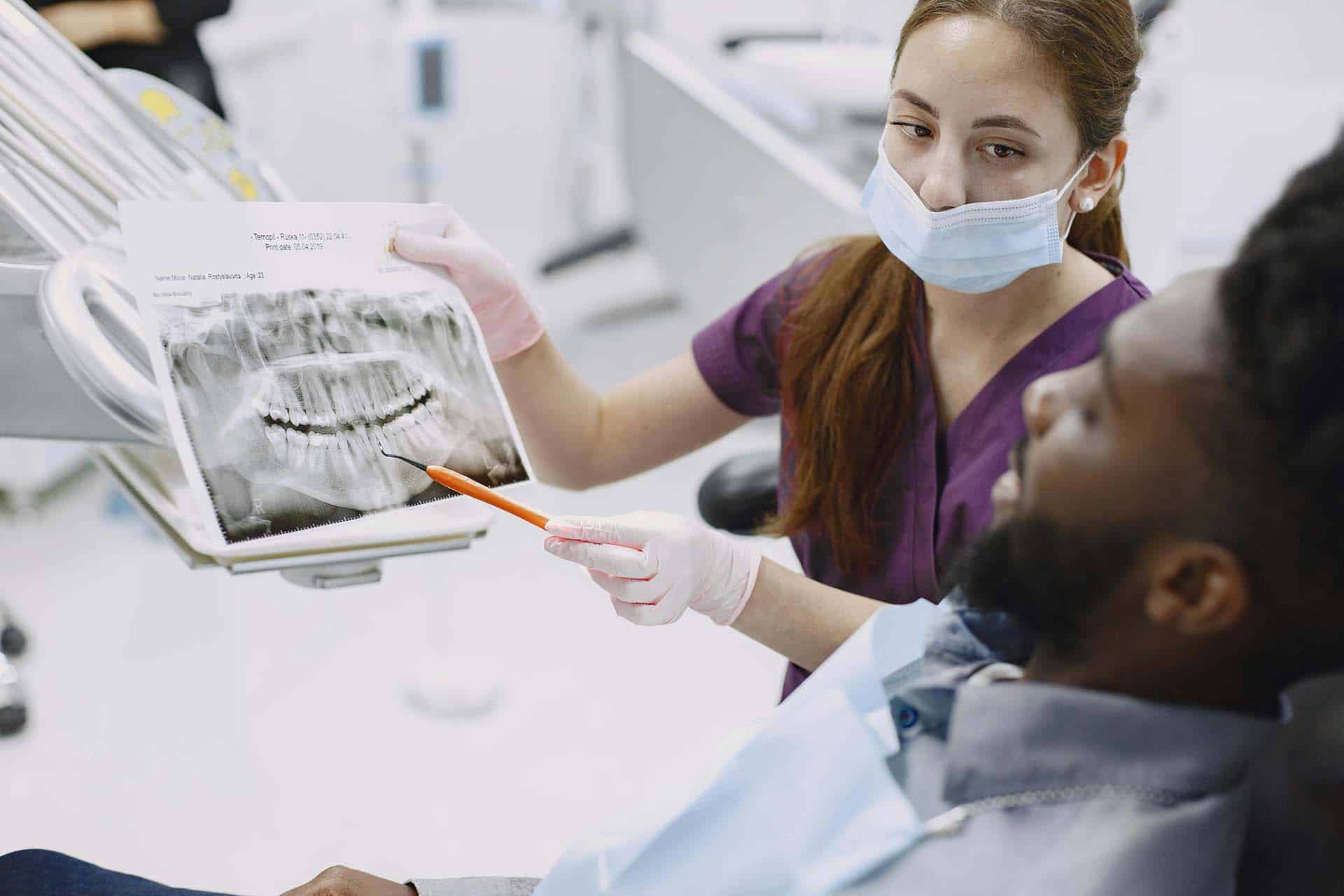Modern dentistry has come a long way, making procedures safer than ever. But there’s always that slim chance of a less-than-ideal recovery. Your tooth might get infected, and it’s important to know which scenarios require immediate attention. So, what are the signs of infection after tooth extraction? Here’s what you should watch out for.
What Is Tooth Extraction?
Sometimes referred to as “pulling” a tooth, this dental procedure involves removing the tooth completely from its socket. While saving natural teeth should always be a priority, sometimes it’s simply not possible. The good news is that with or without your natural tooth, dental crowns and bridges can be used to restore your smile. Extraction might be the best course of action if you have:
- Severe cavities,
- Advanced gum disease,
- A fractured tooth or other dental injuries,
- Impacted (stuck) teeth,
- Crowded teeth.
What Does the Procedure Look Like?
Tooth extraction is done under local anesthesia with the help of special dental instruments. Your tooth will be gently loosened and then carefully lifted from its socket. In certain cases, your dentist will have to create incisions to get better access. Once the extraction is done, the site will be cleaned and disinfected, and the road to recovery can begin.
What Are the Chances of Developing Symptoms of Tooth Extraction Infection?
Modern dental practice has been graced with technological advancements in the last couple of decades. New fields such as laser dentistry have made common procedures almost completely risk-free, minimizing the chances of an infection developing.
Even when it’s done traditionally, the chances of post-op complications are minimal. To put a number on it, only 1.4% of patients reported symptoms of infection, according to the National Library of Medicine. However, that certainly doesn’t mean you don’t have to know about the common signs. If not treated at this early stage, this infection can cause so much more trouble in the long run.

What Are the Signs of Infection After Tooth Extraction?
Once your tooth is “pulled out,” the area is vulnerable to bacteria, which can compromise the healing process. The first symptoms should be noticeable almost immediately, within the first 24 hours after the procedure. So, how do you know if your tooth extraction is infected? Let’s take a look at the most common signs.
The First Sign – Swelling That’s Not Going Down
It’s completely normal to experience swelling after tooth extraction. However, it should only last 24 to 48 hours. Any longer than that, and it might be the first sign of an infection. If the swelling is only getting bigger, or there’s new swelling in the surrounding tissues, you should contact your Charlotte dentist in SouthPark immediately.
Persistent Pain and Discomfort
Once again, discomfort is totally normal after this procedure, lasting two days up to a week. The pain should gradually lessen as the extraction site heals. If you continue to experience it for longer, or it’s getting more intense day by day, an infection might be the culprit.
Excessive or Prolonged Bleeding and Redness
When you get your tooth extracted, avoiding bleeding is just not possible. It can last only a few minutes or the whole first day after the procedure. Any longer than that, and the bleeding is considered excessive, which is one of the most common signs of gum infection after tooth extraction.
Foul Odor, Bad Taste, or Pus
As opposed to previous symptoms, foul odor and bad taste are not expected after extraction. So, if you’re experiencing them, it can be a very telling sign of infection. Also, there might be some yellowish or greenish pus coming from this area.
Fever as a Response to the Infection
When your body is dealing with an infection, your immune system is trying to fight it off. The body will start to produce pyrogens, sending a message to the hypothalamus to elevate your body temperature. And, as we all know, this results in a fever.

What Factors Increase the Risk of Developing an Infection?
Once your treatment is done, your dentist in Charlotte, NC, will prescribe antibiotics to help with the recovery. However, it’s not a guarantee for a swift recovery – you still need proper post-op care. Here are some factors that could compromise the healing process:
- Poor oral hygiene – to get rid of bacteria, you need to brush regularly and rinse your mouth with a prescribed antiseptic mouthwash or a simple solution of warm saltwater,
- Smoking and tobacco use – affects the blood flow and oxygen supply of the wound, which can slow down the healing process,
- Compromised immune system and other medical conditions – a balanced diet, plenty of hydration, and getting enough rest are vital.
What Are the Potential Complications?
A recent study has concluded that around 13% of adults seek dental care because of an infection. You’re definitely not the only one, so if you start to notice the first tell-tale signs, don’t hesitate to reach out to your dentist. After all, if left untreated, this can cause plenty of complications down the road:
Dry Socket
An infection can deter blood clot formation, which leads to a condition known as dry socket. It exposes the underlying nerves and bones, making everything super sensitive and uncomfortable. During the dentist appointment, the area will be cleaned and a medicated dressing will be applied, easing the discomfort and promoting recovery.
Abscess Formation
Abscess formation, a pus pocket made of bacteria, tissues, and dead white blood cells, is another common outcome. Worst case scenario, it can spread to other parts of the body, and then you’re looking at symptoms of jaw infection after tooth extraction.
Spread of Infection
As just mentioned, the infection can spread easily. First, it affects nearby structures, such as teeth and gums, but it can also spread to other parts, including the neck, jawbone, and sinuses. If you’ve got congestion on only one side of your nose, it’s one of the first tell-tale signs of sinus infection after tooth extraction.
Call Your Charlotte, NC, Dentist – The Risks Are Not Worth It
At the end of our guide on how to know if your tooth extraction is infected, here’s the most important tip – take action. Never wait for a small inconvenience to turn into a much bigger deal. Make the first move and contact us at Aspire Dental Wellness.
Our team, led by Dr. Sladjana Bjelac, is serious about providing each patient with a comfortable experience, no matter the condition. Consider us your go-to emergency dental clinic in Charlotte, NC – we’re here to help you keep your smile healthy for the rest of your life.



